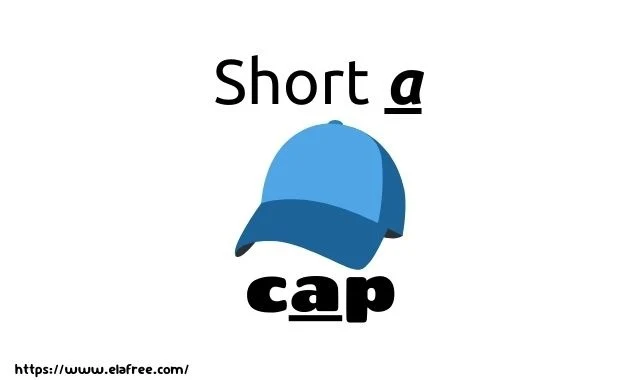Short a - 1st Grade Phonics
Introduction
Welcome to the exciting world of phonics! Today, we'll explore the short "a" sound, a foundational element in learning to read and spell. Mastering short vowel sounds like "a" is crucial for young learners as it unlocks decoding skills and builds confidence in reading. As children progress, their understanding of phonics becomes the key to fluent reading and successful spelling.
Identifying the Short A Sound:
Vowels are tricky because they can make different sounds. Today, we're focusing on the short "a" sound, which is different from its longer counterpart. Think of words like "cat," "hat," and "bat." When you say these words, your mouth doesn't open wide, and the sound is quick and crisp. That's the short "a"!
CVC Words: Building Blocks of Reading
CVC words are like building blocks for reading. They are simple three-letter words that follow a consonant-vowel-consonant pattern, making them perfect for practicing the short "a" sound. Here are some examples:
- C-A-T: cat
- H-A-T: hat
- B-A-T: bat
- M-A-P: map
- S-A-D: sad
Download our free printable CVC word flashcards to help your child practice!
Short a Interactive Activity - 1st Grade Phonics
$$
Say each picture name. Select the picture whose name has the short a sound in the middle.
<->
Engaging Activities for Practicing Short A:
Learning should be fun! Here are some engaging activities to help your child master the short "a" sound:
Auditory Activities:
- Sing along! Songs like "The Ants Go Marching" and "Mary Had a Little Lamb" are filled with short "a" words.
- Rhyme time! Play rhyming games with short "a" words, like "cat, hat, bat."
- Story time! Read short "a" CVC stories and have your child point out the words with the short "a" sound.
Visual Activities:
- Picture it! Use flashcards or pictures of objects with short "a" sounds.
- I Spy! Play "I Spy" with short "a" objects around the house or classroom.
- Puzzle fun! Complete short "a" word searches or crossword puzzles.
Kinesthetic Activities:
- Mold it! Use playdough to form the letter "a" and build short "a" words.
- Magnet magic! Build short "a" words on a whiteboard using magnetic letters.
- Act it out! Hop like a frog, flap like a bat, or tap like a drum to connect movement with short "a" words.
Conclusion: Mastering the Short A Sound!
Mastering the short "a" sound is a significant step in your child's reading journey. With consistent practice and engaging activities, they will be well on their way to becoming confident readers and spellers.
FAQs
What is the phonic sound of short "a"?
The phonic sound of short "a" is pronounced as /æ/ as in "apple," "cat," and "hat." It is a vowel sound that is typically shorter and less stretched than its long vowel counterpart.
What are short "a" words for grade 1?
Short "a" words suitable for first graders include "cat," "bat," "rat," "map," "van," "jam," "wax," and "lap." These words help students practice the /æ/ sound and are simple enough for early readers to decode.
What phonics should be taught in 1st grade?
In first grade, phonics instruction should cover single consonants, short and long vowel sounds, consonant blends (like "bl," "st," and "nd"), digraphs (like "ch," "th," and "sh"), and basic word families. Teaching phonics systematically helps students build reading and spelling skills.
What is the short "a" sound beginning with "a"?
The short "a" sound starting with the letter "a" makes the /æ/ sound. Examples include words like "ant," "apple," "ask," and "ax." This sound is a fundamental vowel sound taught in early reading programs to help students understand vowel consistency and sound recognition.

